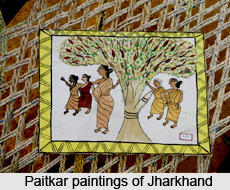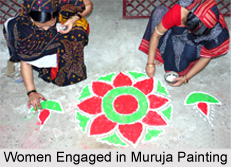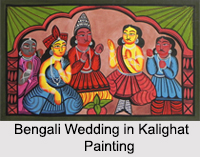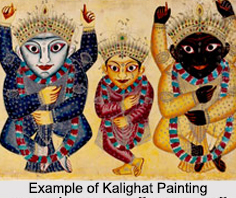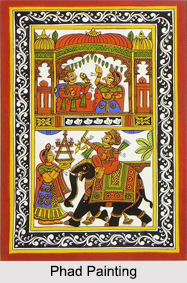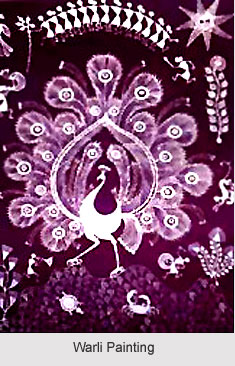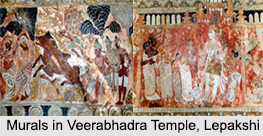 The rich art and craft culture of Andhra Pradesh is appealingly depicted through the paintings practised and indigenous to the South Indian state. Employing excellent craftsmanship and dexterity of adroit artists, these paintings traditionally showcase natural colours, be it mural paintings found on the ceilings of Veerabhadra temple in Lepakshi village or Kalamkari art done in fabrics.
The rich art and craft culture of Andhra Pradesh is appealingly depicted through the paintings practised and indigenous to the South Indian state. Employing excellent craftsmanship and dexterity of adroit artists, these paintings traditionally showcase natural colours, be it mural paintings found on the ceilings of Veerabhadra temple in Lepakshi village or Kalamkari art done in fabrics.
Murals in Veerabhadra Temple, Lepakshi, Andhra Pradesh
Mural Paintings found on the ceilings of Veerabhadra temple in Lepakshi, a small village in Anantapur district of Andhra Pradesh, are well-preserved outstanding examples of paintings and murals of the Vijayanagara era. They most vividly depict facets and features of murals existential during the Vijayanagara Empire, primarily dealing with mythological themes and depicting scenes from the epics and Indian Puranas. The high ceilings of the huge gateways of Veerabhadra temple are divided into a number of strips, and the individual strips are broken into square or rectangular panels. Each one of the panels displays a particular scene, or part of one, in keeping with the theme of representation in the central panel.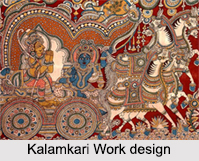
The paintings are detailed in very bright colours obtained from natural pigments, telling stories and legends of Lord Vishnu and Lord Shiva, mythological characters Rama, Krishna, Arjuna and more. There are also murals dedicated to figures unknown, probably kings and queens of the time. The costumes and ornaments of drawn figures have been intricately depicted. The panels are bordered with decorative margins on four sides, going very well with the central panel. The figures in front are well captured due to the light shade of the background. A rather prominent aspect of the figures is that they have been shown tilting backwards, from the feet upwards till the waist, and then again forward from the waist to the neck, with the head standing erect. In terms of both the brushwork and the lines, the parts of these murals do not attain synchronisation with the total figure.
Kalamkari Art, Andhra Pradesh
Kalamkari is the age old distinct art of painting fabrics with a "kalam" (pen). The "kalam` is no ordinary pen but a sharp-pointed pierced bamboo that regulates flow of colour on the fabric. The attractive mix of colours on the fabrics usually portrays characters from Indian mythology. During the 17th and the 18th centuries, the art of Kalamkari was popularized to an extent that it extended across the shores of India. Kalamkari is today very much prevalent in the holy town of Srikalahasti and Machilipatnam city in Andhra Pradesh. The colours employed in this art are extracted from vegetable dyes. Besides mythological themes, the paintings also showcase various forms of lotus flower, cartwheels, parrots and delicate patterns of leaves and flowers.
